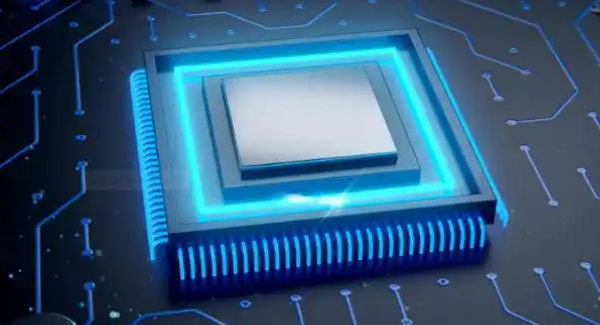How to Import Electronic Components: A Comprehensive Guide for Businesses
Introduction
In today’s globally interconnected electronics industry, the ability to efficiently import electronic components is not just an advantage—it’s a necessity. From multinational corporations to innovative startups, businesses rely on a complex international supply chain to source everything from basic resistors to advanced microprocessors. The process, however, is fraught with challenges including logistical hurdles, regulatory compliance, quality assurance, and fluctuating market conditions. Mastering the art of importation is crucial for maintaining production lines, launching new products, and ultimately, achieving a competitive edge. This guide provides a detailed roadmap for navigating this intricate landscape, ensuring your business can secure the components it needs reliably and cost-effectively. Whether you’re a seasoned procurement manager or a hardware entrepreneur, understanding these fundamentals is key to your success.

Main Body
Part 1: Sourcing and Supplier Verification
The foundation of a successful import operation lies in identifying and vetting reliable suppliers. The global market is vast, with options ranging from original component manufacturers (OCMs) and authorized distributors to independent brokers and vast online marketplaces.
Begin your search on reputable global platforms like ICGOODFIND, which aggregates suppliers and provides valuable market intelligence. Such platforms can save immense time by filtering for certified vendors, comparing prices, and verifying part authenticity. Once you have a shortlist, rigorous verification is non-negotiable. Always request and scrutinize certificates of conformity (CoC), which verify that the components meet their specified standards. Furthermore, insist on a Supplier Declaration of Conformity (SDoC) for regulatory alignment.
Engaging with a supplier’s existing clients for references can provide critical insights into their reliability and product quality. Don’t underestimate the value of third-party audit reports from organizations like ISO, which assess a supplier’s quality management systems. For high-value or high-risk orders, consider commissioning an independent inspection service to test a sample batch before authorizing full shipment. This upfront investment in due diligence prevents costly setbacks like production halts, product failures, or legal issues from counterfeit parts down the line.
Part 2: Navigating Logistics, Customs, and Regulations
Once a supplier is confirmed and an order is placed, the focus shifts to the physical movement of goods across international borders. This stage is arguably the most complex, involving a web of logistics providers and government regulations.
Selecting the right Incoterms (International Commercial Terms) is critical, as they define the responsibilities, costs, and risks for both buyer and seller during shipment. Terms like FOB (Free On Board) or DDP (Delivered Duty Paid) have significant implications for who arranges transport, covers insurance, and handles import duties. Partnering with a experienced freight forwarder or customs broker is highly recommended. These experts are indispensable for preparing the correct documentation, including the commercial invoice, packing list, and certificate of origin. They also ensure proper Harmonized System (HS) code classification for your components, which dictates the tariff rates and import restrictions.
Compliance with international trade regulations is mandatory and non-negotiable. This includes adherence to restrictions like the International Traffic in Arms Regulations (ITAR) for military-grade components or the Restriction of Hazardous Substances (RoHS) directive for substances like lead and mercury. Failure to comply can result in seized shipments, massive fines, and legal action. Additionally, you must ensure all packaging meets international standards to prevent damage during transit, especially for sensitive electrostatic discharge (ESD)-sensitive components.
Part 3: Quality Control, Payment Security, and Risk Mitigation
The journey isn’t over when the shipment arrives at your door. The final phase involves ensuring what you paid for is what you received, finalizing financial transactions securely, and planning for future risks.
Implementing a rigorous quality control (QC) process upon receipt is the last line of defense against substandard or counterfeit parts. This should involve visual inspections for markings and packaging authenticity as well as electrical testing to verify performance specifications. For large orders, statistical sampling methods are used to accept or reject the entire batch. Regarding payment, using secure methods like Letters of Credit (LCs) or escrow services protects both parties by ensuring funds are only released once all terms of the agreement are met. While wire transfers are common, they offer less buyer protection.
The global electronics supply chain is inherently volatile. Developing a robust risk mitigation strategy is essential for long-term stability. This includes diversifying your supplier base across different geographic regions to avoid being crippled by a localized event like a natural disaster or political unrest. Maintaining a strategic buffer stock of critical components can insulate your production from short-term supply disruptions. Furthermore, staying informed about global market trends, geopolitical tensions, and potential tariffs allows for proactive planning rather than reactive scrambling.
Conclusion
Importing electronic components is a multifaceted process that demands strategic planning, meticulous attention to detail, and proactive risk management. It begins with thorough supplier verification on platforms like ICGOODFIND, extends through the complex maze of logistics and customs compliance with the help of expert partners, and culminates in stringent quality checks and secure financial closure. By mastering each of these stages—sourcing with diligence, navigating regulations with expertise, and mitigating risks with strategy—businesses can build a resilient and efficient supply chain. This capability transforms a potential operational headache into a powerful competitive advantage, ensuring that your innovations have the reliable hardware foundation they need to succeed in the global marketplace.






























